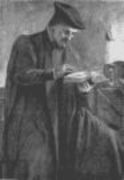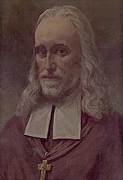The Seed of the Church : Martyrs of Christian Unity
That they all may be one
For centuries, although the Church may have experienced painful division, whatever the reasons and causes, Christians have always prayed the prayer of Christ on the night before he died, "Father, may they all be one" John 17.23
In January 2008, all the churches will celebrate the Centenary of the Week of Prayer for Christian Unity, giving thanks for the great progress that has been made, the many prayers answered, and renewing the commitment of Christian people to visible unity, "so that the world may believe."
Healing the Memory
In the years leading up to the Centenary of the Week of Prayer, there have been various initiatives in the United Kingdom in response to Pope John Paul II's call to repentance, first issued in his Letter, Tertio Millennio Adveniente, as the whole of Christianity prepared for the 2000th anniversary of the birth of Christ. He recalled the wounds in the history of the Church, the use of violence in the cause of the truth, but also the ecumenism in the faithfulness and holiness of the martyrs on all sides of the Church. He therefore proposed that the conscience of Christ's people be purified with pardon, a 'healing of memory', even a new memory of these things.
At various events in Oxford, Gloucester, Walsingham, and London - at the Tower, Charterhouse and Tyburn - Christians of today's churches and heirs to the heritage of the Catholics and Protestant Reformers of the past met to lament the sufferings and separation of the past, to pray for the purification and reconciliation of Christian memory and to ask that the martyrs' witness will bear fruit in Christian unity now and in the future.
Thomas Bilney, a Catholic priest, promoting Church reform (above) was the first of the martyrs to die in London in 1531. He was burned on a charge of heresy at Billingsgate, 19 August 1531, partly owing to his association with more radical thinkers, among them Hugh Latimer, who regarded him as a mentor.
St Oliver Plunkett, Catholic archbishop of Armagh in Ireland (below), was the last. He was hanged, drawn and quartered on conviction for high treason, at Tyburn on 1 July 1681.
About this site
Visit the links above to learn more about the events that have taken place recently, the stories of the martyrs and to read some of the papers given at the celebrations and commemorations.
This site is sponsored by the Society for Ecumenical Studies and by Unitas, the Catholic League for the Unity of Christians. Over time we will want to add to the information and features on the site. All ideas are welcome, so please send us an email,
More Reading
The following publications offer valuable insights and background information concerning the nature and significance of the martyrdom traditions in the various churches represented in the United Kingdom at the moment, or on the theme of martyrdom, and that side of each Christian's spiritual life and witness known as ascesis, in general.
- The Catholic Martyrs of the Twentieth Century, Robert Royal. New York: Crossroad, 2000
- Enriching Communion, Bill Snelson. London: Churches Together in England, 2006
- The Inner Kingdom, Metropolitan Kallistos Ware. New York: St Vladimir Seminary Press, 2000
- Salvation at Stake: Christian Martyrdom in Early Modern Europe, Brad Gregory. Cambridge MA: Harvard University Press, 1999
- The Construction of Martyrdom in the English Catholic Community 1535-1603, Anne Dillon. Aldershot: Ashgate, 2002
- The Trail of Martyrdom, Sarah Covington. Notre Dame Indiana: University of Notre Dame Press, 2003
- The Reformation: A History, Diarmaid MacCulloch. London: Penguin Books, 2003
- The Voices of Morebath, Eamon Duffy. London: New Haven Books, 2001

